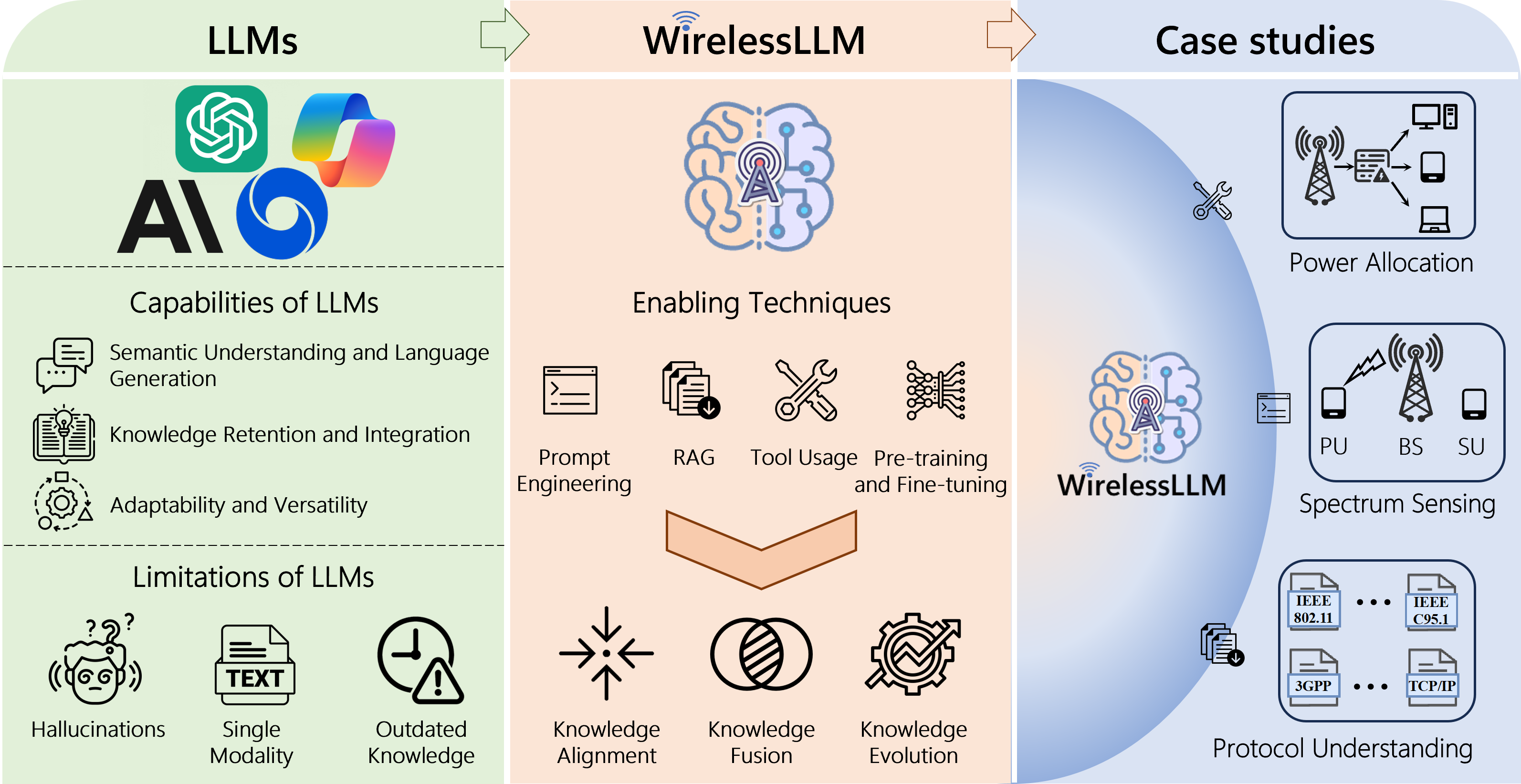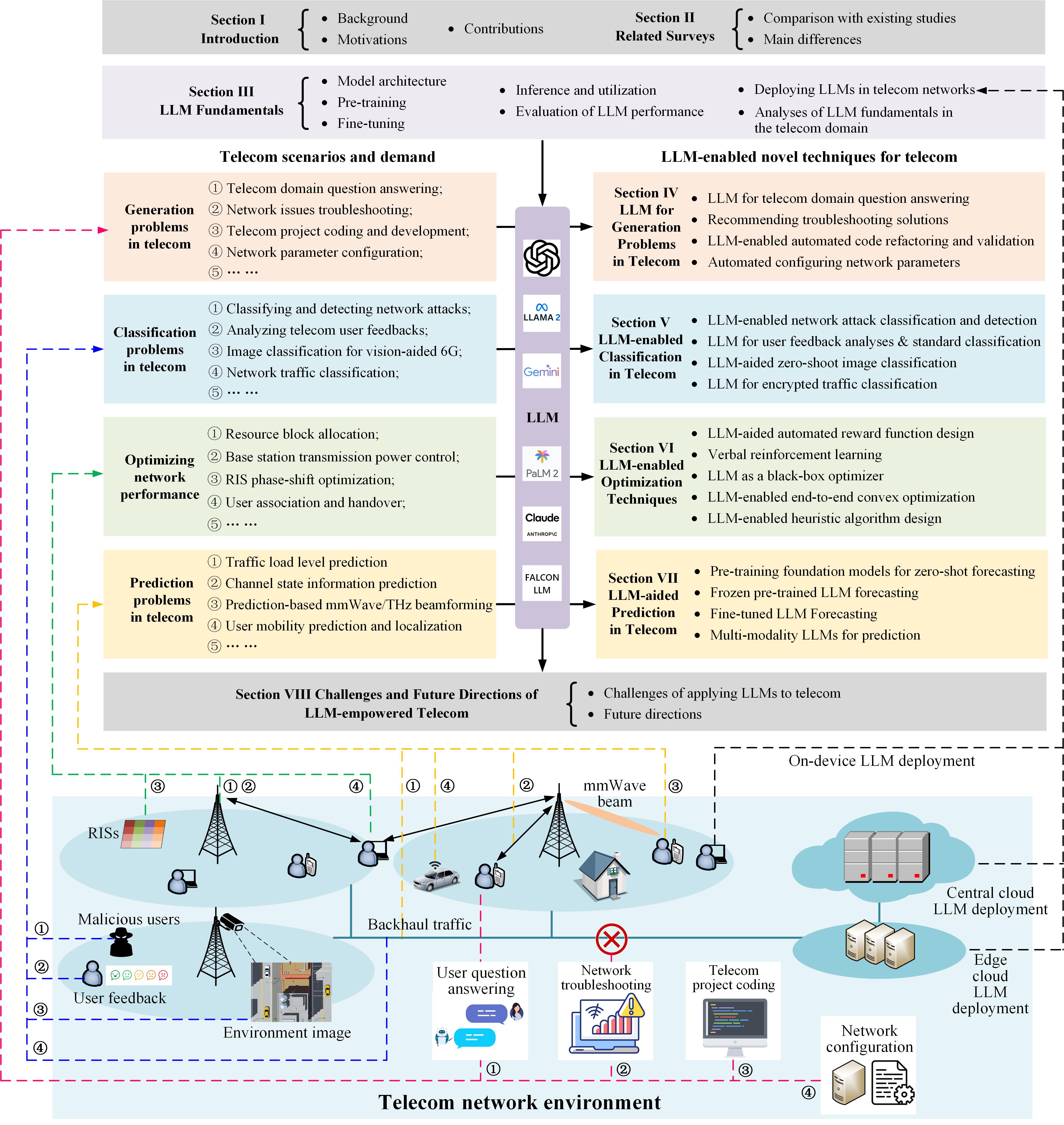Large Language Models (LLMs) Assisted Wireless Network Deployment in Urban Settings
2405.13356

0
0
💬
Abstract
The advent of Large Language Models (LLMs) has revolutionized language understanding and human-like text generation, drawing interest from many other fields with this question in mind: What else are the LLMs capable of? Despite their widespread adoption, ongoing research continues to explore new ways to integrate LLMs into diverse systems. This paper explores new techniques to harness the power of LLMs for 6G (6th Generation) wireless communication technologies, a domain where automation and intelligent systems are pivotal. The inherent adaptability of LLMs to domain-specific tasks positions them as prime candidates for enhancing wireless systems in the 6G landscape. We introduce a novel Reinforcement Learning (RL) based framework that leverages LLMs for network deployment in wireless communications. Our approach involves training an RL agent, utilizing LLMs as its core, in an urban setting to maximize coverage. The agent's objective is to navigate the complexities of urban environments and identify the network parameters for optimal area coverage. Additionally, we integrate LLMs with Convolutional Neural Networks (CNNs) to capitalize on their strengths while mitigating their limitations. The Deep Deterministic Policy Gradient (DDPG) algorithm is employed for training purposes. The results suggest that LLM-assisted models can outperform CNN-based models in some cases while performing at least as well in others.
Create account to get full access
Overview
- The paper explores how Large Language Models (LLMs) can be leveraged to enhance 6G wireless communication technologies.
- It proposes a novel Reinforcement Learning (RL) framework that uses LLMs as the core to optimize network deployment in urban environments.
- The framework also integrates LLMs with Convolutional Neural Networks (CNNs) to combine their respective strengths.
Plain English Explanation
Large Language Models (LLMs) have revolutionized language understanding and text generation, leading to their widespread adoption. This paper investigates how these powerful models can be applied to another domain: 6G wireless communication technologies.
The researchers develop an RL-based framework that uses LLMs as its core to help optimize the deployment of wireless networks in complex urban environments. The goal is to maximize the coverage area by navigating the challenges posed by urban settings.
Additionally, the researchers combine LLMs with Convolutional Neural Networks (CNNs) to leverage the strengths of both approaches. This hybrid model is trained using the Deep Deterministic Policy Gradient (DDPG) algorithm.
The results suggest that the LLM-assisted models can outperform CNN-based models in some cases, while performing at least as well in others. This indicates the potential of LLMs to enhance wireless communication systems, particularly in the context of the upcoming 6G technologies.
Technical Explanation
The paper introduces a novel Reinforcement Learning (RL) framework that utilizes Large Language Models (LLMs) as the core component to optimize network deployment in urban environments for 6G wireless communications.
The RL agent is trained in an urban setting with the objective of maximizing the coverage area. By leveraging the inherent adaptability of LLMs, the agent is able to navigate the complexities of the urban landscape and identify the optimal network parameters.
Furthermore, the researchers integrate LLMs with Convolutional Neural Networks (CNNs) to combine the strengths of the two approaches. The Deep Deterministic Policy Gradient (DDPG) algorithm is employed for training the hybrid model.
The experimental results demonstrate that the LLM-assisted models can outperform CNN-based models in certain scenarios, while achieving comparable performance in others. This suggests the potential of LLMs to enhance wireless communication systems, especially in the context of the emerging 6G technologies.
Critical Analysis
The paper presents a promising approach to leveraging Large Language Models (LLMs) for optimizing wireless network deployment in urban environments. However, it is important to consider some potential limitations and areas for further research.
The paper does not provide a detailed analysis of the computational and resource requirements of the proposed RL framework, which can be a crucial factor in real-world deployment scenarios. Additionally, the experiments are conducted in a simulated urban environment, and further validation in actual urban settings would be necessary to assess the framework's practical feasibility and performance.
While the results suggest the potential of LLMs to outperform CNN-based models, the paper does not delve into the specific reasons or mechanisms behind this performance difference. A more in-depth analysis of the LLM's capabilities and limitations compared to CNNs in the context of wireless network optimization would be valuable.
Furthermore, the paper does not explore the potential impact of LLM biases or limitations on the reliability and fairness of the network optimization process. Addressing these concerns could enhance the robustness and trustworthiness of the proposed framework.
Overall, the paper's exploration of the landscape of large language models and their application to wireless communication systems is commendable, but further research and validation are needed to fully realize the potential of this approach.
Conclusion
This paper presents a novel Reinforcement Learning framework that leverages Large Language Models (LLMs) to optimize wireless network deployment in urban environments for 6G communication technologies. The results indicate that LLM-assisted models can outperform CNN-based approaches in certain scenarios, showcasing the potential of LLMs to enhance wireless systems.
The integration of LLMs with Convolutional Neural Networks demonstrates the versatility of these powerful language models and their ability to complement other AI techniques. As the research on adapting large language models to networking continues, the proposed framework could pave the way for more intelligent and adaptive wireless communication systems in the 6G era.
This summary was produced with help from an AI and may contain inaccuracies - check out the links to read the original source documents!
Related Papers

WirelessLLM: Empowering Large Language Models Towards Wireless Intelligence
Jiawei Shao, Jingwen Tong, Qiong Wu, Wei Guo, Zijian Li, Zehong Lin, Jun Zhang

0
0
The rapid evolution of wireless technologies and the growing complexity of network infrastructures necessitate a paradigm shift in how communication networks are designed, configured, and managed. Recent advancements in Large Language Models (LLMs) have sparked interest in their potential to revolutionize wireless communication systems. However, existing studies on LLMs for wireless systems are limited to a direct application for telecom language understanding. To empower LLMs with knowledge and expertise in the wireless domain, this paper proposes WirelessLLM, a comprehensive framework for adapting and enhancing LLMs to address the unique challenges and requirements of wireless communication networks. We first identify three foundational principles that underpin WirelessLLM: knowledge alignment, knowledge fusion, and knowledge evolution. Then, we investigate the enabling technologies to build WirelessLLM, including prompt engineering, retrieval augmented generation, tool usage, multi-modal pre-training, and domain-specific fine-tuning. Moreover, we present three case studies to demonstrate the practical applicability and benefits of WirelessLLM for solving typical problems in wireless networks. Finally, we conclude this paper by highlighting key challenges and outlining potential avenues for future research.
6/18/2024

Large Language Model (LLM) for Telecommunications: A Comprehensive Survey on Principles, Key Techniques, and Opportunities
Hao Zhou, Chengming Hu, Ye Yuan, Yufei Cui, Yili Jin, Can Chen, Haolun Wu, Dun Yuan, Li Jiang, Di Wu, Xue Liu, Charlie Zhang, Xianbin Wang, Jiangchuan Liu

0
0
Large language models (LLMs) have received considerable attention recently due to their outstanding comprehension and reasoning capabilities, leading to great progress in many fields. The advancement of LLM techniques also offers promising opportunities to automate many tasks in the telecommunication (telecom) field. After pre-training and fine-tuning, LLMs can perform diverse downstream tasks based on human instructions, paving the way to artificial general intelligence (AGI)-enabled 6G. Given the great potential of LLM technologies, this work aims to provide a comprehensive overview of LLM-enabled telecom networks. In particular, we first present LLM fundamentals, including model architecture, pre-training, fine-tuning, inference and utilization, model evaluation, and telecom deployment. Then, we introduce LLM-enabled key techniques and telecom applications in terms of generation, classification, optimization, and prediction problems. Specifically, the LLM-enabled generation applications include telecom domain knowledge, code, and network configuration generation. After that, the LLM-based classification applications involve network security, text, image, and traffic classification problems. Moreover, multiple LLM-enabled optimization techniques are introduced, such as automated reward function design for reinforcement learning and verbal reinforcement learning. Furthermore, for LLM-aided prediction problems, we discussed time-series prediction models and multi-modality prediction problems for telecom. Finally, we highlight the challenges and identify the future directions of LLM-enabled telecom networks.
5/20/2024

Large Language Model-Driven Curriculum Design for Mobile Networks
Omar Erak, Omar Alhussein, Shimaa Naser, Nouf Alabbasi, De Mi, Sami Muhaidat

0
0
This study introduces an innovative framework that employs large language models (LLMs) to automate the design and generation of curricula for reinforcement learning (RL). As mobile networks evolve towards the 6G era, managing their increasing complexity and dynamic nature poses significant challenges. Conventional RL approaches often suffer from slow convergence and poor generalization due to conflicting objectives and the large state and action spaces associated with mobile networks. To address these shortcomings, we introduce curriculum learning, a method that systematically exposes the RL agent to progressively challenging tasks, improving convergence and generalization. However, curriculum design typically requires extensive domain knowledge and manual human effort. Our framework mitigates this by utilizing the generative capabilities of LLMs to automate the curriculum design process, significantly reducing human effort while improving the RL agent's convergence and performance. We deploy our approach within a simulated mobile network environment and demonstrate improved RL convergence rates, generalization to unseen scenarios, and overall performance enhancements. As a case study, we consider autonomous coordination and user association in mobile networks. Our obtained results highlight the potential of combining LLM-based curriculum generation with RL for managing next-generation wireless networks, marking a significant step towards fully autonomous network operations.
6/24/2024

Large Language Models in Wireless Application Design: In-Context Learning-enhanced Automatic Network Intrusion Detection
Han Zhang, Akram Bin Sediq, Ali Afana, Melike Erol-Kantarci

0
0
Large language models (LLMs), especially generative pre-trained transformers (GPTs), have recently demonstrated outstanding ability in information comprehension and problem-solving. This has motivated many studies in applying LLMs to wireless communication networks. In this paper, we propose a pre-trained LLM-empowered framework to perform fully automatic network intrusion detection. Three in-context learning methods are designed and compared to enhance the performance of LLMs. With experiments on a real network intrusion detection dataset, in-context learning proves to be highly beneficial in improving the task processing performance in a way that no further training or fine-tuning of LLMs is required. We show that for GPT-4, testing accuracy and F1-Score can be improved by 90%. Moreover, pre-trained LLMs demonstrate big potential in performing wireless communication-related tasks. Specifically, the proposed framework can reach an accuracy and F1-Score of over 95% on different types of attacks with GPT-4 using only 10 in-context learning examples.
5/21/2024